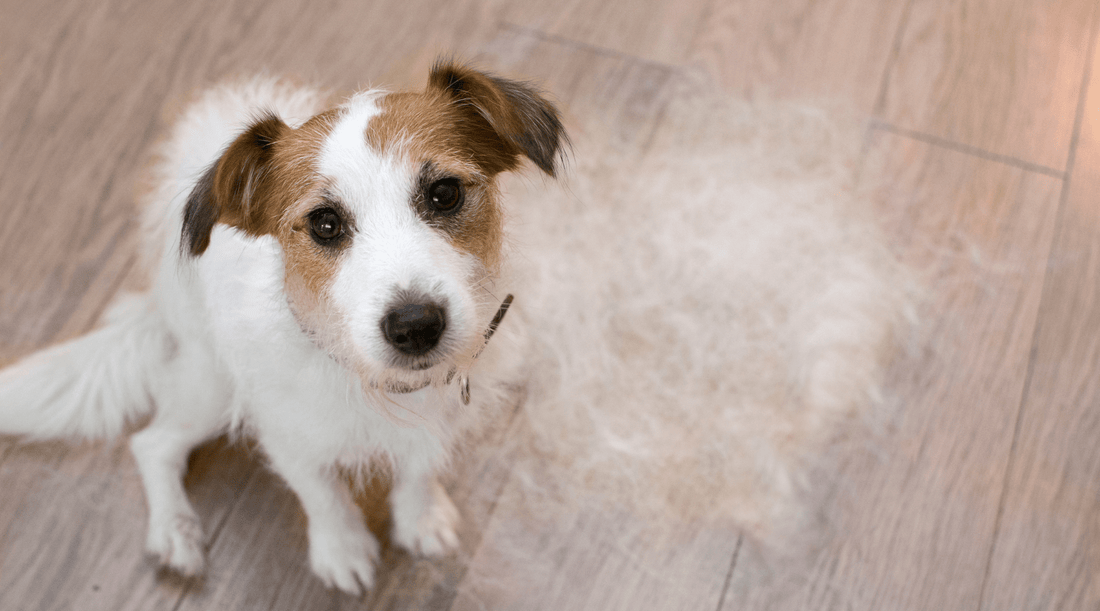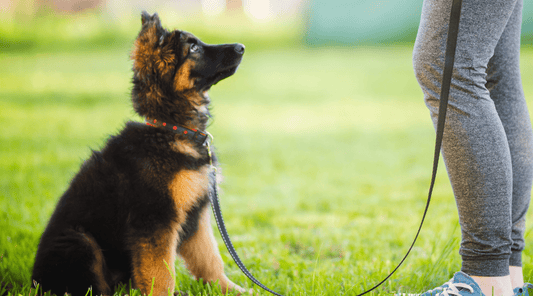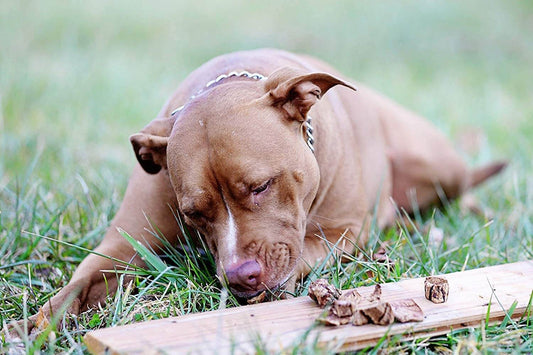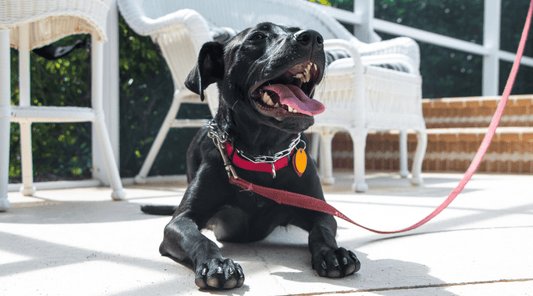
How to Manage Dog Shedding: Tools and Tips for Healthy Coats
Dawn Miller Feb 04, 20255 Minute ReadWith warmer weather still several months away, it may seem too early to think about how to manage dog shedding. But the truth is the real solution to this age-old problem requires some planning and implementation before shedding enters full swing.
Whether you're here to learn about managing seasonal shedding or your pup's losing clumps for reasons unknown, you'll find useful tips here.
My lab mix, Bruno's first shed in my house, was terrible. I had just brought him home from the shelter that introduced us, and he was a nervous wreck.
Between warmer days and new home anxiety hair loss, he had me dancing around the living room, sweeping endless clumps. Despite my efforts to keep up, when I looked down, my socks had become fur slippers.
Why is my dog shedding so much? I had some good ideas, but as I learned, there was more to this problem than met the eye.
Why Is My Dog Shedding So Much?
Shedding is a natural process for dogs. They shed to get rid of their worn-out coat to welcome new hair—generally in the spring and fall. This is called seasonal shedding.
But excessive shedding—the kind I was dealing with—is not normal. It's a sign that something isn't right. Several factors can make seasonal shedding worse and lead to year-round shed cycles.
1. Poor Nutrition
Lack of omega 3 healthy fats, collagen structural protein, and various vitamins and minerals can lead to brittle wiry hair and unhealthy skin underneath. Both can increase shedding.
Too much added sugar in the diet from unhealthy dog treats, unmanaged blood sugar, and dog obesity can also weaken the skin, leading to hair loss.
2. Allergies
Allergies result from an overactive immune system that treats harmless substances as potential invaders. Immune imbalances can also be linked to a lack of omega-3 fats and conjugated linoleic acid (CLA), a type of omega-6.
3. Skin Conditions
This is a broad term that could include everything from dermatitis to skin infections that won't heal to chronically dry skin. Research is increasingly pointing toward nutritional deficiencies like low zinc, B3, C, and, once again, omega 3 fats as potentially causing and worsening skin conditions.
Low hyaluronic acid may be another culprit. This lesser-known nutrient found in beef bone marrow and connective tissues like beef trachea is essential for helping the skin and joints retain moisture.
Though not directly a skin condition, hyperthyroidism can also cause clumpy hair loss because it speeds up cellular processes. This can be related to iron or iodine deficiencies.
4. Skin Parasites
Fleas, garden mites, ringworms, mange mites, etc., can all irritate the skin, cause excessive scratching, and, yes, hair loss.
5. Stress or Anxiety
Yes. Bruno was absolutely stress-shedding. Stress-shedding can happen instantly. I once had a dog with vet anxiety. I'd see her hair flying around the room during the checkup.
Changes in routine, new environments, new pack-mates, or loud noises can trigger shedding. But here's the thing: stressors and stress aren't the same thing.
A stressor is something that can possibly lead to feelings of stress.
Stress, on the other hand, comes from the inside. It's how our bodies and minds respond to stressful events. So, by helping Bruno better manage stress, I could stop the stress shedding.
Now that we have a better understanding of the causes let's look at practical, healthy dog coat tips to address them.
How to Reduce Dog Hair in the House with Healthy Dog Coat Tips
1. Groom Regularly...Preferably Outside
If you already groom your pup at least once a week, you probably have this one taken care of. But if not, start now and don't wait for seasonal shedding.
Dogs shed a little all the time, like we do. The hair gets stuck in there until enough comes out to clump. So, removing it a little at a time outside helps tremendously.
This is the most immediate way to reduce dog hair in the house, as some of these other tips will take time to work.
If you brush weekly, it only takes around 5 minutes for a short-hair dog. Use a bristle brush or rubber curry comb.
Long-haired, wiry coats and double-coated dogs like huskies benefit from 10 minutes 2X weekly. A slicker brush or an undercoat rake works best.
If you haven't groomed them in a while, you may need to make a day of it. But if you make it a weekly or bi-weekly routine, it's a speedy process.
2. Bathe Smart
Use a gentle, dog-specific shampoo to clean their coat and skin without stripping natural oils. For dogs with heavy shedding, try a de-shedding shampoo for extra fur control. I like this hypoallergenic dog shampoo unless your dog is allergic to cocamide.
3. Enhance Their Nutrition
Dogs on an all-kibble diet are often low on several key nutrients because high-heat cooking destroys a lot of nutrition—most concerning omega 3 and 6.
Supplementing your dog's nutrition with healthy dog treats like single-ingredient beef lung bites is a great way to enhance nutrition.
But make sure the all-natural beef dog bones come from grass-fed beef cattle. Grass-fed beef is 2.5X higher in omega 3 and lower in saturated fat.
This healthy dog treat is also rich in collagen, zinc, B vitamins, and many of the other nutrients dogs often lack when they only eat dog food (including the wet stuff)
4. Invest Time in Training
Training? Puzzled emoji? This is an often overlooked remedy for overshedding. Training increases dog confidence and reduces stress because you and their life seem more predictable.
When you train your dog to play games with you like fetch, hide-and-seek (dog scavenger hunt), and find it, you also increase their exercise, another profound stress reducer.
My lab Bruno has really benefited from the time I've spent teaching him basic commands and more advanced skills that allow him to explore off-leash when we hike.
Interested? Check out this Free 7-Day Dog Training Challenge.
5. Establish a Regular Dog Bone Chew Session
A dog bone session is a critical component of a well-rounded dog experience. Dogs instinctually chew on dog bones to relieve stress, entertain themselves, and clean their teeth.
So, give that dog a bone! It's not just something fun to chew on. I look for grass-fed beef marrow bones from USA-sourced cattle to know I'm getting the very best and supporting local jobs simultaneously.
6. Request a Skin Allergy Test
If shedding continues after the above steps, ask your vet to perform a skin allergy test and maybe a food allergy test to learn about harmless ingredients your dog may be sensitive to.
For example, cocamide (a synthetic form of coconut oil) is a ubiquitous ingredient in shampoo. But a small number of humans and dogs are allergic to it.
7. Rule Out Other Skin Problems
Of course, if the problem persists, talk to your dog's doctor. They may have clinical solutions like antihistamines, corticosteroids, or medicated shampoos that can help.
Dog Health & Happiness Start Here
Dog shedding is inevitable. But how much ends up in your house is entirely optional. By following these healthy dog coat tips, you can treat the problem holistically for a very healthy, happy K9.
Available On:





